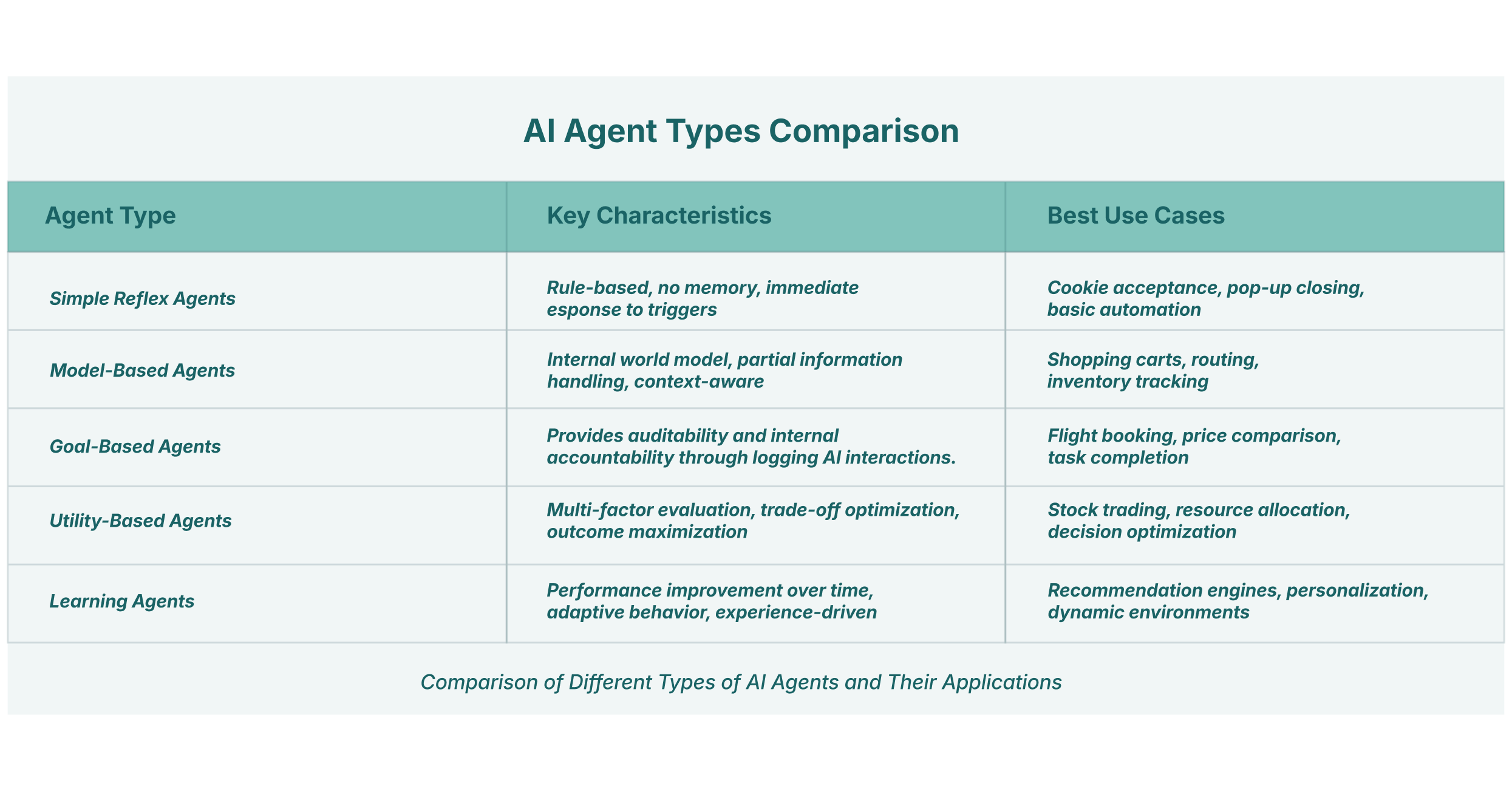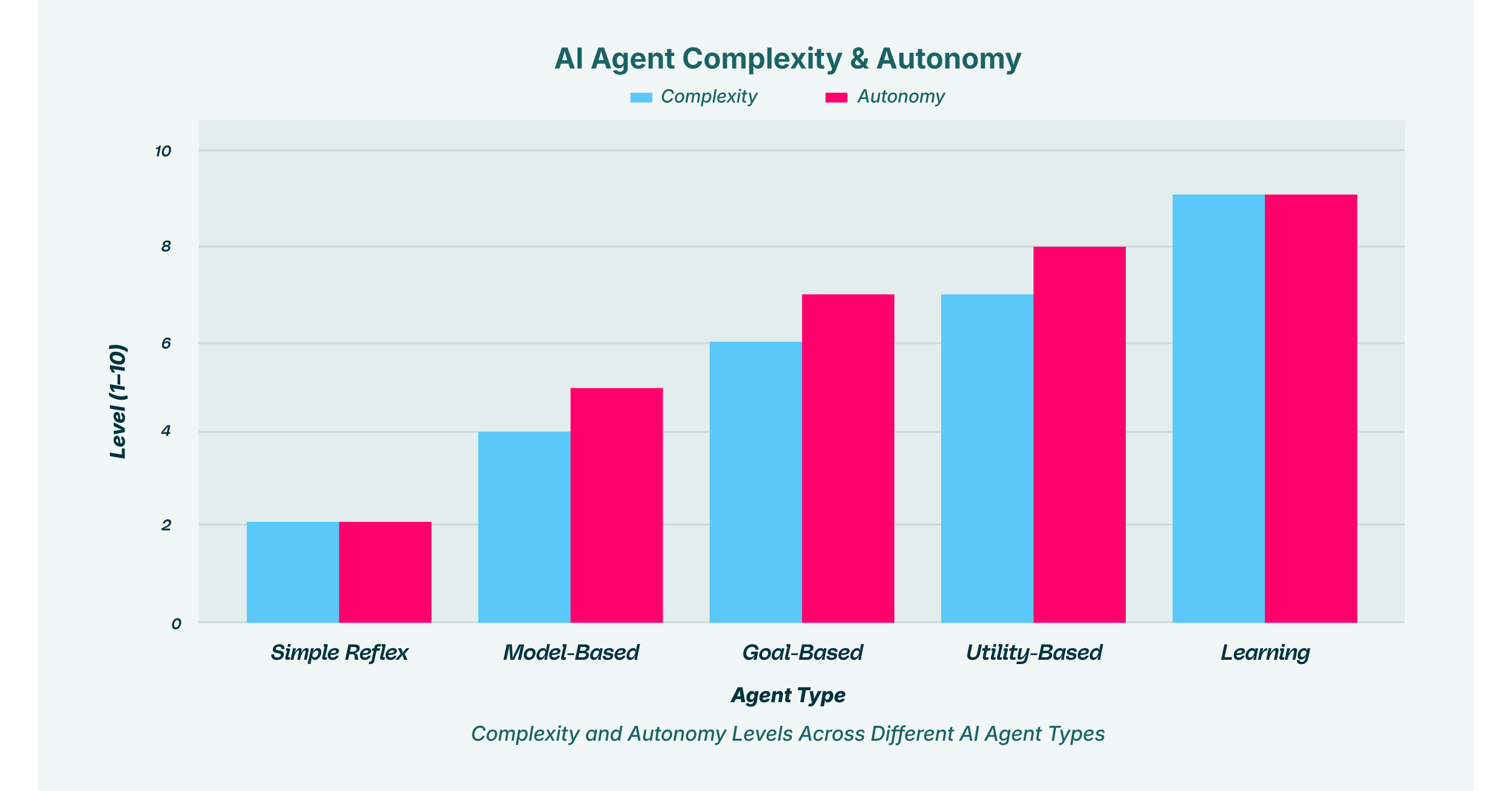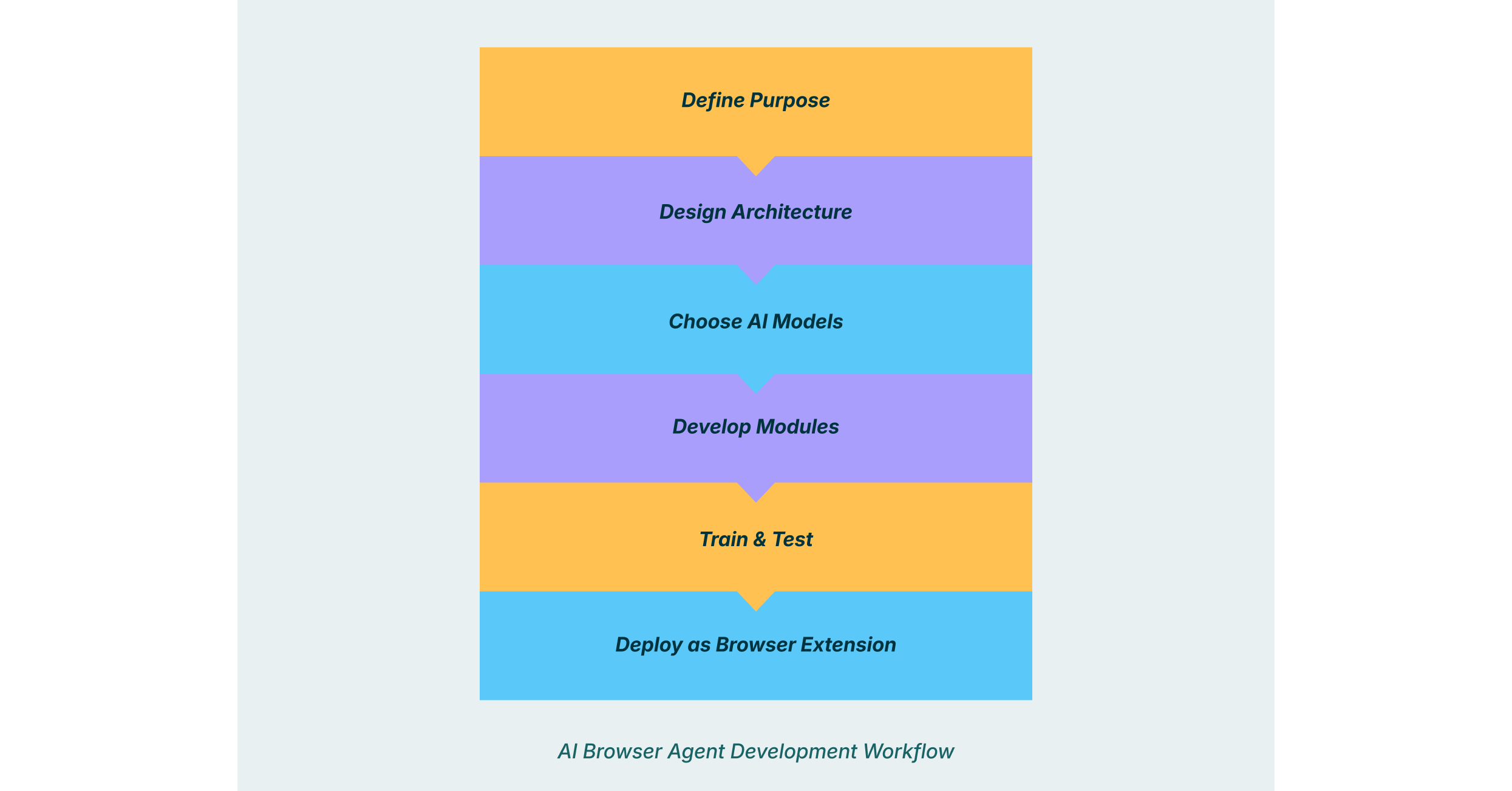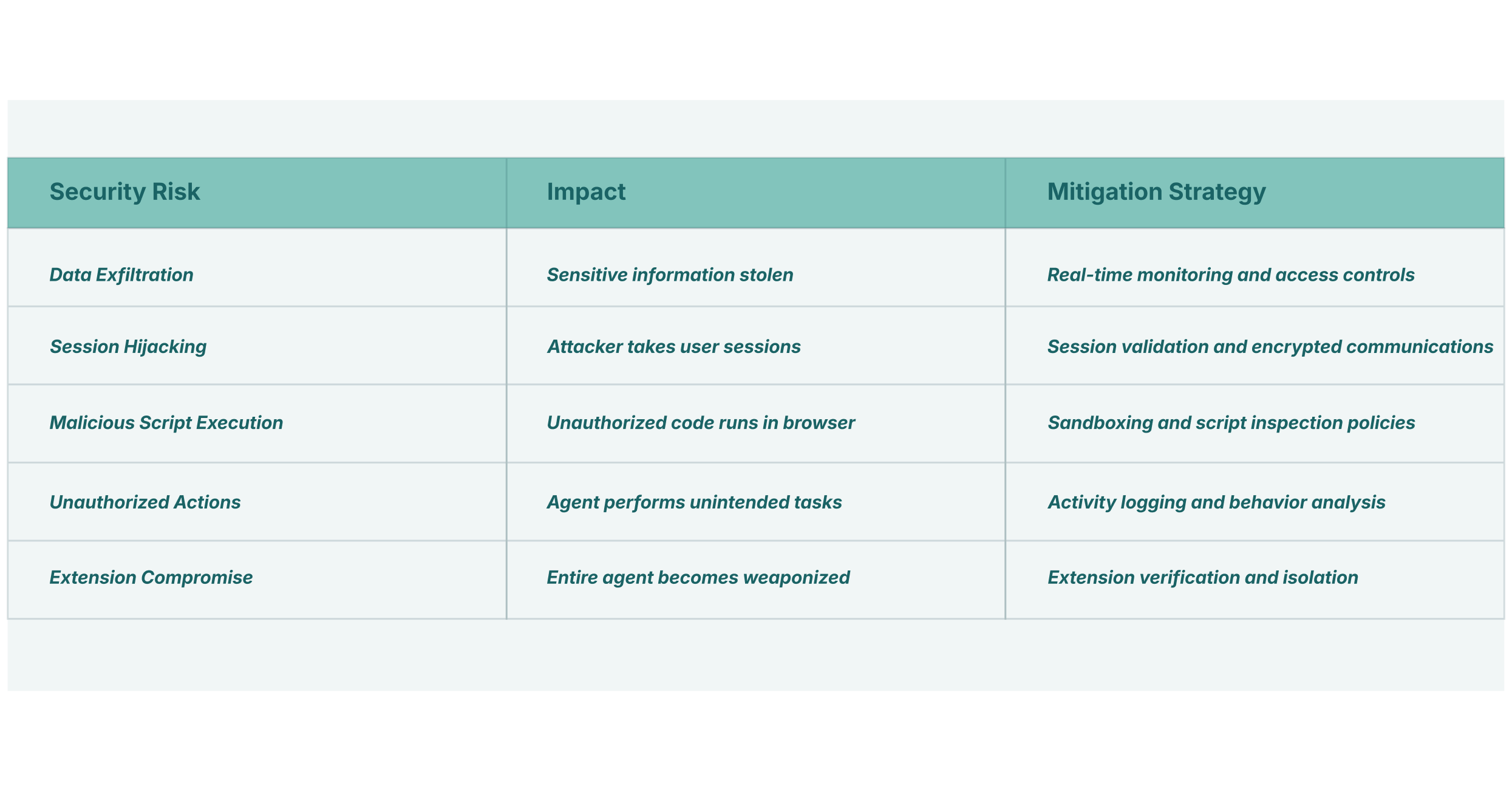The way we interact with the internet is undergoing a fundamental transformation. For years, web browsers have served as passive windows to the digital world, but the rise of artificial intelligence is reshaping them into active, intelligent partners. At the forefront of this evolution are AI browser agents, autonomous assistants redefining what is possible in a browser. These sophisticated AI-powered tools operate directly within your browser to automate complex online tasks, from gathering and summarizing information to executing multi-step workflows without needing direct human intervention.

As our digital lives become increasingly intricate, these agents represent a significant leap forward in productivity and efficiency. They act as intelligent partners that can understand high-level goals and navigate the web to achieve them. This article will explore the architecture of AI browser agents, detail the different types of agents, and provide a guide on how to build them securely.
The Architecture of AI Browser Agents
At their core, AI browser agents integrate advanced AI models, such as large language models (LLMs), directly into the browser’s operational framework. This AI engine acts as the “brain,” interpreting user commands given in natural language and orchestrating a series of actions to accomplish the desired outcome. The process begins with the user defining a high-level goal, which the agent then deconstructs into a sequence of smaller, executable web tasks. For instance, a user might ask the agent to “find the best deals on flights to London for next month.” The agent would then break this down into steps like navigating to travel websites, inputting the specified dates and destination, comparing prices, and presenting the user with the most cost-effective options.
Once the task is broken down, the agent autonomously navigates websites, interacts with various elements like buttons and forms, and extracts the necessary data, all while mimicking human-like browsing behavior. This ability to operate independently is what makes autonomous AI agents so powerful. This functionality is a core feature of modern AI browsers, which are evolving from passive content renderers into proactive, goal-oriented platforms. The entire workflow is made possible through a combination of AI-driven decision-making and the technical capabilities of browser extentions or direct browser integration. Imagine a marketing analyst who needs to compile a report on competitor pricing. Instead of manually visiting dozens of websites, the analyst could delegate the task to an AI browser agent. The agent would navigate to each competitor’s site, locate the pricing information, extract the relevant data, and compile it into a structured report, saving the analyst hours of tedious work.
Exploring the Different Types of AI Agents
To fully understand the capabilities of AI browser agents, it’s essential to explore the different type of AI agents that can be developed. These classifications are based on the agent’s level of intelligence, autonomy, and ability to perceive and act upon its environment.
The most basic type of AI agents is simple reflex agents. These agents operate on a simple “if-then” rule-based system, responding to specific environmental triggers with a predetermined action. They do not possess memory of past events and only react to the current state of their environment. Think of them as the most basic form of automation. A classic example is an automated system that sends a welcome email to a new user immediately after they sign up. In a browser context, a simple reflex agent could be programmed to automatically accept cookie policies on websites or close pop-up ads, handling simple and repetitive tasks. While their capabilities are limited, they can still be useful for streamlining simple workflows.
Model-Based Agents
A step up in complexity from their simpler counterparts, model-based agents maintain an internal “world model” that allows them to track the state of their environment. This internal representation of the world enables them to make more informed decisions by considering the context of a situation, even when complete information is not immediately available. These agents can handle partially observable environments and are a foundational element of more advanced AI systems. For instance, a shopping agent might remember items in a user’s cart, even if the user navigates away from the shopping site and returns later. This allows the agent to provide a more consistent and personalized experience. Other AI agent examples include a logistics routing agent that detects traffic delays and reroutes deliveries based on its internal model of current road conditions.
Goal-Based Agents
Goal-based agents are designed with a specific objective in mind and can make decisions that help them achieve that goal. Unlike model-based agents that only react to their environment, goal-based agents can proactively plan a sequence of actions to reach a desired state. This requires search and planning capabilities to determine the most effective path to the goal. A prime example of this type would be a travel-booking agent tasked with finding the cheapest flight. The agent would explore various travel sites, compare prices across different airlines and dates, and select the option that best meets its programmed objective of minimizing cost. This goal-oriented behavior allows these agents to tackle more complex tasks than simpler agent types.
Utility-Based Agents
Utility-based agents take goal-oriented decision-making a step further by incorporating a measure of “utility” or “happiness” to evaluate the desirability of different outcomes. When multiple paths can lead to the same goal, a utility-based agent will choose the one that maximizes its utility function. This function can be based on various factors, such as speed, cost, efficiency, or a combination of multiple parameters. For example, a stock-trading agent might be programmed to maximize profit while minimizing risk. The agent would constantly evaluate market data, considering both potential gains and the probability of losses, to make optimal trading decisions. This ability to weigh different factors and make trade-offs allows for more nuanced and intelligent behavior.
Learning Agents
The most advanced class of agents is learning agents, which can improve their performance over time through experience. These agents are equipped with a learning element that allows them to analyze their past actions, identify successes and failures, and adapt their behavior accordingly. This ability to learn makes them highly adaptable and capable of operating in dynamic and unfamiliar environments. AI agents’ examples include recommendation engines on streaming platforms that learn a user’s preferences over time to provide more personalized content suggestions. In the context of AI browsers, a learning agent could learn a user’s browsing habits and proactively fetch information or automate tasks it predicts the user will need.
API-Enhanced Hybrid Agents
In practice, many modern AI browser agents are not of a single type but are instead API-enhanced hybrid agents. These agents combine the characteristics of multiple agent types to create a more powerful and versatile system. For example, a research agent might use a goal-based approach to plan its research process, a model-based approach to keep track of the information it has gathered, and a learning component to improve its research strategies over time. Furthermore, these agents can leverage external APIs to enhance their capabilities. For example, a research agent could use a search engine’s API to gather information and a summarization API to condense it into a concise summary. This hybrid approach allows for the creation of highly sophisticated and capable agents.
A Practical Guide to Building AI Browser Agents
Building an AI browser agent involves a multi-step process that combines AI development with web technologies. Here’s a practical guide to get you started:
- Define the Agent’s Purpose and Scope: The first and most crucial step is to clearly define what you want your agent to accomplish. What specific tasks will it perform? What are its goals? A clear definition of the agent’s purpose will guide the entire development process, from choosing the right algorithms to designing the user interface.
- Design the Agent’s Architecture: Next, you need to design the agent’s architecture. This includes the decision-making logic, the perception modules for processing web data (like HTML content), and the action modules for interacting with web pages (like clicking buttons or filling forms). This is where you’ll decide which type of AI agents best suits your needs. A simple task may only require a simple reflex agent, while a more complex, multi-step process would benefit from a goal-based or utility-based approach.
- Choose the Right AI Models and Tools: The “brain” of your agent will likely be a large language model (LLM). You’ll need to choose an LLM that is suitable for your task and has the necessary capabilities. You will also need to select the right tools and frameworks for building your agent. There are several open-source and commercial platforms available that can help you get started.
- Develop the Perception and Action Modules: The perception module is responsible for understanding the content of a web page, while the action module is responsible for interacting with it. Developing these modules requires a good understanding of web technologies like HTML, CSS, and JavaScript. You’ll need to write code that can parse web pages, identify relevant elements, and programmatically interact with them.
- Train and Test the Agent: Once you have developed the core components of your agent, you need to train and test it. This involves providing the agent with examples of how to perform its task and then testing it in various scenarios to ensure it is both effective and reliable. This is an iterative process, and you will likely need to go back and fine-tune your agent’s behavior based on the results of your testing.
- Deployment and Iteration: Finally, you need to deploy your agent. One common way to do this is by packaging it as a browser extentions, which allows it to operate directly within the user’s browser. Once deployed, you should continue to monitor your agent’s performance and gather feedback from users to identify areas for improvement.
The Unseen Risks: Securing Your AI Browser Agents
While AI browser agents offer immense potential, they also introduce new and significant security risks. Since these agents can access sensitive information and perform actions on behalf of a user, they can become a prime target for malicious actors.
A compromised agent could be used to exfiltrate sensitive data, hijack user sessions, or perform unauthorized actions, creating a significant security blind spot for enterprises. Imagine a phishing attack that targets browser extentions. If a malicious extension is installed, it could potentially gain control of the AI browser agent and use it to steal credentials, financial information, or other sensitive data.
To mitigate these risks, a new approach to browser security is needed. Traditional security solutions are often blind to the activities of AI browser agents, making it difficult to detect and prevent malicious behavior. This is where solutions that operate directly within the browser, such as LayerX’s Enterprise Browser Extension, come into play. By providing deep visibility into all browser activity, including the actions of AI browser agents, LayerX can provide the necessary visibility and control to secure these powerful tools.
By monitoring the agent’s behavior in real-time and enforcing granular security policies, organizations can protect against threats like data leakage and malicious script execution. This browser-centric security model allows enterprises to safely adopt AI browsers and autonomous AI agents without exposing themselves to unnecessary risk. The ability to discover and monitor all agentic AI activity is crucial for maintaining a strong security posture in the age of AI.
Looking Forward to Your First AI Agent
AI browser agents are set to revolutionize the way we work and interact with the web. By automating complex tasks and acting as intelligent assistants, they promise to unlock new levels of productivity and efficiency. However, as with any powerful new technology, they also come with new risks. As organizations increasingly adopt AI browsers and autonomous AI agents, it is critical to have a security solution in place that can protect against the unique threats they introduce. By taking a browser-centric approach to security, organizations can harness the full potential of AI browser agents while keeping their sensitive data safe and secure.



